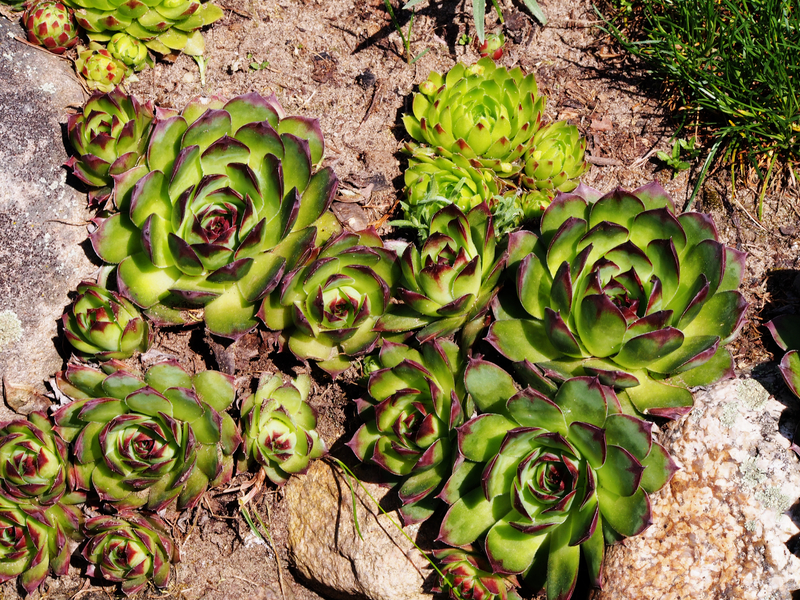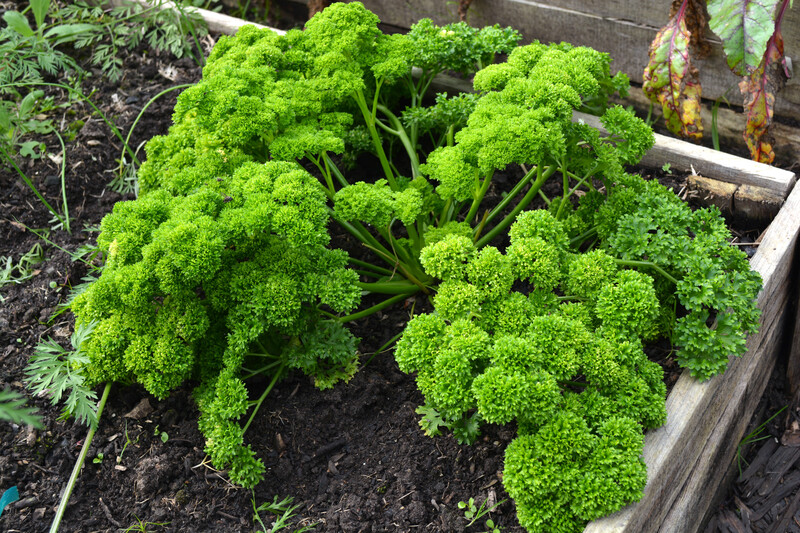Master the Art of Drought-Proofing Your Lawn During the Hottest Months
Are brown, patchy lawns making your summers less enjoyable? When the mercury rises and rainfall becomes scarce, drought-proofing your lawn is not just a matter of pride--it's vital for a lush, resilient yard that thrives even in relentless heat. If you want to protect your turf from heat stress and water restrictions, you need the right strategies, expert tips, and a deep understanding of your lawn's needs.
In this comprehensive guide, we'll unveil the secrets to maintaining a green, healthy yard despite drought conditions. From soil science to smart irrigation, you'll discover exactly how to drought-proof your lawn--so you can enjoy a vibrant space all summer long.
Understanding Drought and Its Impact on Lawns
Before diving into actionable steps, it's essential to know how drought affects your grass:
- Loss of moisture: High temperatures and low rainfall deplete soil moisture, leading to wilting, browning, or dormancy.
- Soil compaction: Dry soils often become hard, reducing water infiltration and root growth.
- Pest and disease pressure: Weak, stressed grass is highly vulnerable to pests and fungal diseases.
- Reduced photosynthesis: Persistent drought inhibits grass from producing food, causing slow growth or dieback.
Mastering drought-resilient lawn care starts with recognizing these challenges and adapting your approach throughout the hottest months of the year.

Choose the Right Grass: The Foundation of Drought-Proofing
Not all lawns are created equal when it comes to surviving heatwaves. Selecting a drought-resistant grass variety forms the foundation of enduring summer lawns.
Best Drought-Tolerant Grass Types
- Bermuda Grass: Thrives in full sun and tolerates drought exceptionally well.
- Buffalo Grass: Native to the Great Plains, it's highly water-efficient and low-maintenance.
- Zoysia Grass: Offers good drought resistance with dense, carpet-like growth.
- Tall Fescue: Deep roots enable it to access moisture far below the surface.
Evaluate your local climate, sunlight, and soil type when choosing the perfect drought-resilient turf for your lawn.
Soil Preparation: Healthy Roots for a Healthy Lawn
The secret to surviving drought lies below the surface. Well-prepared, fertile soil gives your grass the best chance of withstanding water stress.
Key Steps for Optimizing Soil
- Aeration: Use a lawn aerator to relieve compaction, allowing water and oxygen to penetrate deep into the roots.
- Organic Matter: Add compost or organic soil amendments to boost water retention and soil fertility.
- Mulching: Apply a thin layer of grass clippings or shredded leaves to help retain moisture and suppress weeds.
- Soil Testing: Evaluate soil pH and nutrient levels, amending as needed for optimal grass health.
Strong roots anchor your lawn's drought-proofing success, enabling grass to access deeper moisture reserves as the topsoil dries.
Water Smarter, Not Harder: Efficient Irrigation Strategies
Water conservation is at the core of drought-proof lawn care. By refining your irrigation practices, you can give your grass the moisture it needs--without waste.
Top Irrigation Tips for Drought-Proof Lawns
- Water deeply, but infrequently: Aim for 1 inch of water once a week rather than frequent shallow watering. This encourages roots to grow deeper.
- Early morning irrigation: Water before sunrise to minimize evaporation and fungal growth.
- Consider smart controllers: Install weather-based irrigation systems that adjust schedules based on actual rainfall and temperature.
- Check for leaks: Inspect hoses, sprinklers, and connections to prevent water loss.
- Use drip irrigation: Target root zones with drip or soaker hoses to maximize efficiency and minimize runoff.
Remember: Overwatering is just as harmful as underwatering. Monitoring weather forecasts and soil moisture will help you water only when necessary.
Lawn Maintenance Tactics That Beat the Heat
Adapt your lawn care routine for drought survival with these expert tricks:
1. Mow High and Less Often
- Set your mower blade to 3-4 inches during heatwaves. Taller grass shades the soil, reducing evaporation and promoting deeper roots.
- Avoid mowing during midday--cut grass in the early morning or late afternoon to prevent extra stress.
2. Sharpen Your Mower Blades
- Dull blades tear grass, leaving it vulnerable to heat and disease. Sharp blades make clean cuts that heal quickly.
3. Leave Clippings on the Lawn
- Grasscycling returns moisture and nutrients to the soil, acting as a natural mulch that supports drought resistance.
Smart Fertilization for Drought-Resilient Lawns
Fertilizer can be a double-edged sword during summer drought. Too much nitrogen encourages tender growth that quickly wilts under stress, but the right nutrients help grass stay strong.
Fertilizing Tips for Drought-Proof Lawns
- Limit or skip fertilization during peak heat. Wait for cooler weather if possible.
- If fertilizing, use slow-release or organic options that won't burn grass or encourage excessive growth.
- Emphasize potassium and micronutrients, which support root health and drought tolerance.
Always water grass deeply after fertilizing to activate soil nutrients and reduce burning risks.
Embrace Lawn Alternatives: Xeriscaping & Ground Covers
If persistent drought makes traditional lawns unsustainable in your region, consider beautiful, low-water alternatives such as:
- Xeriscaping: Replace grass with native plants, succulents, and decorative stones for a stunning, water-efficient landscape.
- Ground covers: Use drought-tolerant species like creeping thyme, clover, or sedum for a green look without constant watering.
- Mulched beds and pathways: Reduce lawn size, adding points of interest that need minimal care or irrigation.
These options can dramatically cut water use and guarantee a beautiful yard during even the hottest, driest months.
Conserve and Harvest Rainwater
Water conservation isn't just about using less; it's also about collecting and saving what nature provides. Here's how to make the most of intermittent rain:
- Install rain barrels: Capture roof runoff to irrigate your lawn and garden during dry spells.
- Use permeable surfaces: Replace concrete paths with gravel or pavers that allow water to reach the roots beneath.
- Create swales or rain gardens: Direct water flow to where it's needed, reducing runoff and maximizing moisture retention.
Pest and Weed Control During Drought
As your lawn endures drought, weakened grass becomes prime real estate for pests and invasive weeds. Stay vigilant with these protective measures:
- Monitor for bugs: Armyworms, chinch bugs, and grubs thrive in stressed lawns.
- Avoid chemical herbicides and pesticides during severe drought. They can stress or burn struggling grass; opt for manual removal or targeted, organic options.
- Promote healthy competition: A thick, well-maintained lawn is the best defense against weed takeover.
Signs Your Lawn Needs Immediate Attention
- Persistent footprints: Grass that doesn't spring back after walking is a sign of dehydration.
- Dull, bluish color: Healthy grass is vibrant green; a blue-gray hue means it's under stress.
- Widespread browning: While dormancy is a survival mechanism, monitor for excessive or patchy browning that indicates damage.
If you notice these symptoms, act fast: increase deep watering, temporarily suspend mowing, and double-check for pests.
Long-Term Habits for Sustainable Lawn Health
Becoming a drought-resistant lawn master is about cultivating year-round habits that nurture turf, soil, and ecosystem health. Here are essential practices to implement:
- Annual aeration: Keep soil loose to improve root growth and water absorption.
- Top-dress with compost every fall or spring: This builds soil fertility and resilience.
- Rotate watering and mowing schedules: Prevent grass from relying on surface moisture.
- Stay informed: Monitor local weather and drought advisories for timely lawn adjustments.

Frequently Asked Questions
How long can a drought-proofed lawn survive without water?
Drought-resistant grass varieties can survive several weeks, sometimes months, in dormancy by conserving energy. With proper soil preparation and care, they will green up again once rain returns.
Should I let my lawn go dormant during drought?
Yes, allowing grass to enter natural dormancy is often best. Continue minimal watering (about 1/2 inch every 2-4 weeks) to keep roots alive but avoid lush growth until regular rains resume.
Can I revive a dead-looking lawn after drought?
If roots remain alive, proper watering, fertilizing, and overseeding in the fall can restore lawn health. Severely damaged sections may need reseeding or replacing with more drought-tolerant grasses.
Conclusion: Thrive, Don't Just Survive, Through Summer Drought
Mastering the art of drought-proofing your lawn during the hottest months is within your reach--if you plan, adapt, and nurture your yard with patience and the right techniques. By choosing resilient grass, improving soil, watering wisely, and adjusting your maintenance habits, you can enjoy a vibrant, eco-friendly lawn year after year, no matter what Mother Nature throws your way.
Start your journey to a drought-resistant, beautiful lawn today and make this the summer your yard sets the standard in your neighborhood!